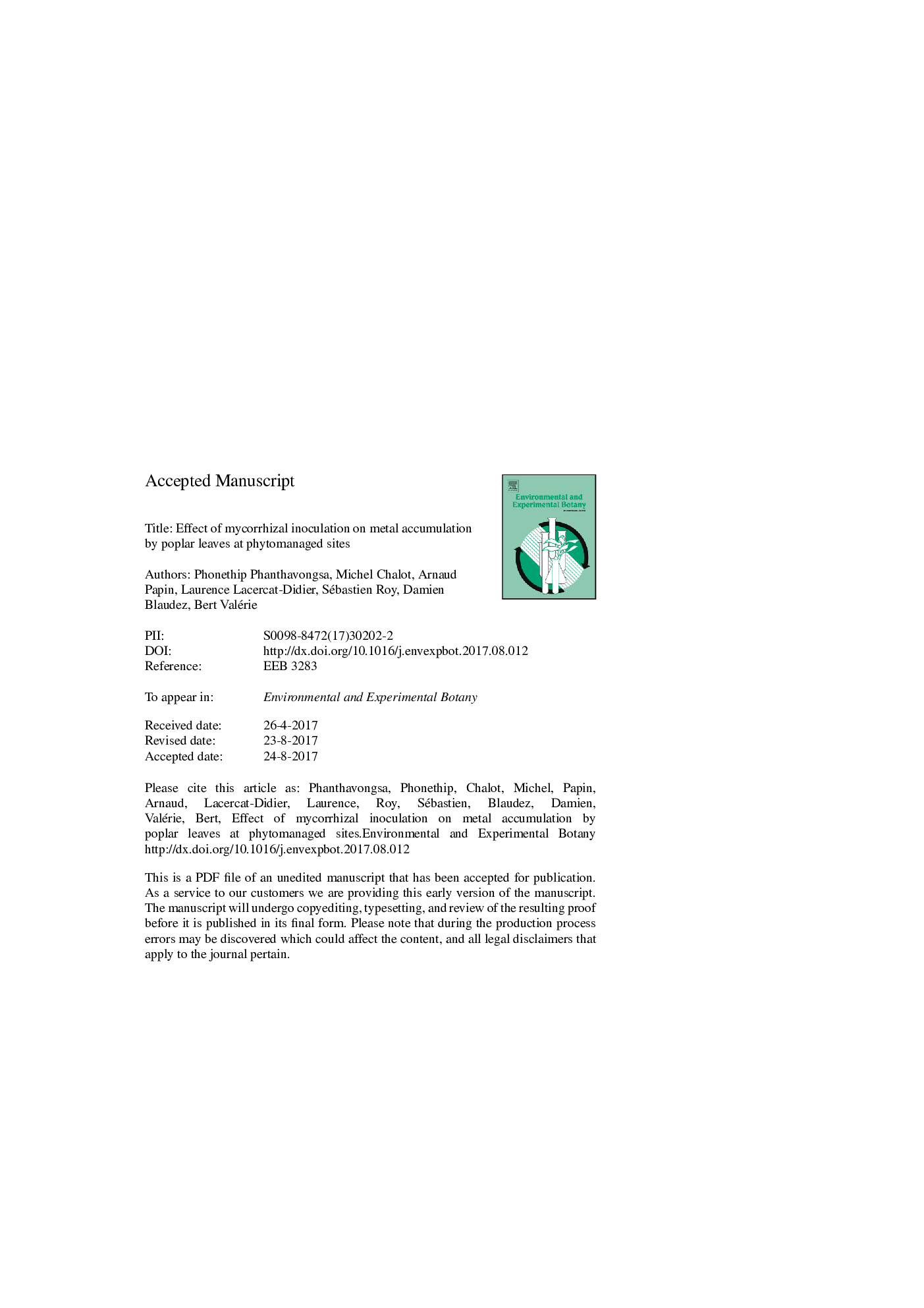| Article ID | Journal | Published Year | Pages | File Type |
|---|---|---|---|---|
| 5766581 | Environmental and Experimental Botany | 2017 | 31 Pages |
Abstract
Phytotechnologies for the management of lands contaminated with potentially toxic elements (PTEs) are considered as gentle alternatives to conventional remediation techniques. During the last few years, phytotechnologies have progressively shifted to phytomanagement, a concept that includes the valorization of the plant biomass produced on the contaminated site. This study aimed at evaluating the mid-term effect of ecto- and endomycorrhizal inoculation on the reduction of PTE mobility in soils and foliar accumulation by two poplar clones, Skado (Populus trichocarpa x P. maximowiczii) and I-214 (P. deltoides x P. nigra), dedicated to bioenergy purposes. The effects of inoculation were investigated in two large scale trials of 1Â ha each. Poplars grown on highly contaminated soils accumulated excessive Cd and Zn in leaves compared with those planted on less contaminated soils, and the I-214 clone generally accumulated less PTEs than the Skado clone. Interestingly, the filtering capacity of mycorrhizal fungi was significant for Zn, Cu, Pb and Cr in Skado leaves only at the most contaminated areas after two growing seasons. These foliar concentrations were not correlated with Ca(NO3)2-extractable concentrations in soils, suggesting that mycorrhizal fungi limited PTE translocation from roots to leaves without impacting PTE mobility in soils. Therefore, the reduction of PTE accumulation in poplar leaves may be optimized by selecting appropriate combinations of cultivars and inocula at specific PTE levels and soil conditions. Because Cd and Zn may pose a risk after leaf abscission and wood harvest, further research is needed to efficiently reduce Cd and Zn concentrations in poplar tissues. Otherwise, the phytomanagement of metal contaminated sites with poplars should include options to safely manage both leaves and wood.
Related Topics
Life Sciences
Agricultural and Biological Sciences
Ecology, Evolution, Behavior and Systematics
Authors
Phonethip Phanthavongsa, Michel Chalot, Arnaud Papin, Laurence Lacercat-Didier, Sébastien Roy, Damien Blaudez, Bert Valérie,
